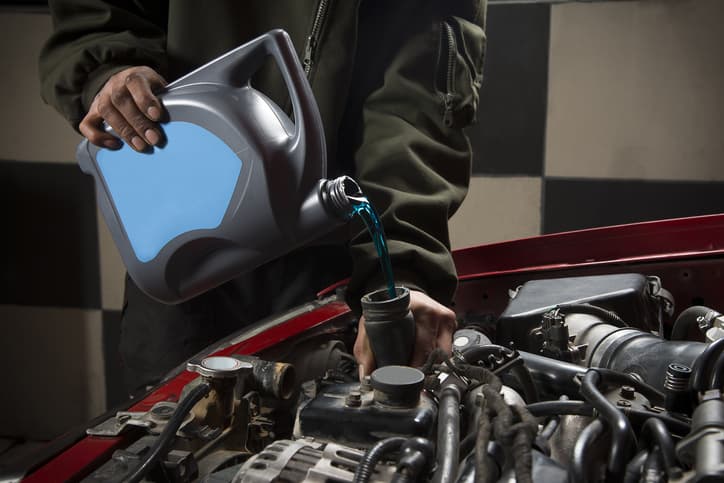How To Replace Car Coolant
Quickly Replace Your Car Coolant

Car coolant, or antifreeze, keeps your engine cool and prevents key components from overheating as you drive. We show you why it’s so important and how you can replace yours at home.
WHAT IS CAR COOLANT?
Car coolant is a type of propylene glycol-based liquid that transfers heat away from your engine and helps lubricate moving parts. As you drive, your engine can get up to heats as high as 4,500°F, more than hot enough to melt things you’d rather weren’t melted. Car coolant helps prevent that, circulating around your engine and keeping everything at an optimum operational temperature.
Unlike a pure water-based solution - which would do an even better job of cooling your engine down - coolant doesn’t pose the risk of rust. It keeps everything cool and smooth, allowing your engine to run smoothly for longer.
HOW TO REPLACE YOUR CAR COOLANT
Most services will change your car coolant for you, as well as topping up your levels of antifreeze and other vital engine fluids. However, you might choose to do it yourself at home, and so long as you’ve got a few basic mechanical tools, it’s definitely something you can do.
Here’s how you change your own car coolant:
- Leave your engine to cool down. Ensure the handbrake is on and that your car is in first gear.
- Raise the front of your car up on jacks. Apply chocks to your rear wheels to add extra stability.
- Remove the shielding beneath your car. This is where your mechanical tools will come in handy - you may need specific versions for your car.
- Put a bowl or bucket beneath the radiator and remove the drain valve.
- Now you’ll need to flush the system. To do this, turn your engine on and leave it to run for a few minutes. You should see liquid coming out of the radiator.
- Remove the reserve tank and drain any remaining coolant from there.
- Replace your drain valve and add your new coolant, filling it to the base of the filler neck.
WHEN TO REPLACE YOUR CAR COOLANT
You should flush and change your coolant at least every 50,000 miles. That’s why it’s normally done at your annual service, as you’re unlikely to exceed this limit during a year’s driving. However, some newer models will need their coolant replaced after 10,000 miles, so you should always check your handbook.
Flushing and replacing your coolant is vital to keep your engine running smoothly. It will remove any dirt that has built up during driving, which can clog up your cooling system. This could result in your engine overheating, causing a whole host of problems that it’s better off avoiding.
WHICH CAR COOLANT TO USE
There are so many different types of car coolant available, designed for all different types of car, that it can be a little overwhelming trying to decide which one is right for you. As a rule of thumb, we’d always suggest using the car coolant recommended by your manufacturer. Just look up the make of your car to find out.
Cars made after 1998 generally prefer car coolant that uses silicate-free, organic acid technology (OAT). These types provide better anti-corrosion protection, meaning you should have to change coolant less often.
Older cars usually need car coolant that does contain silicate.
